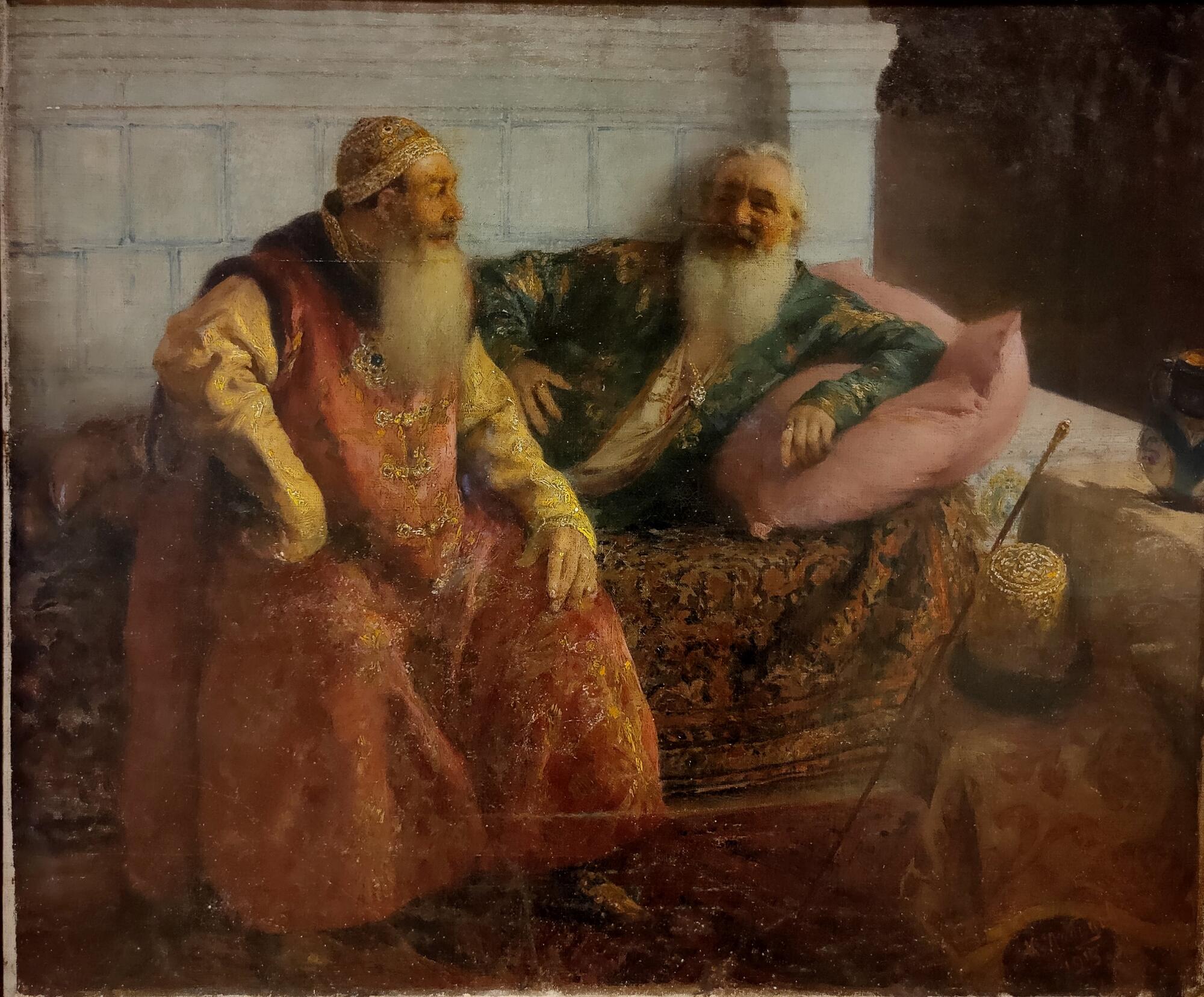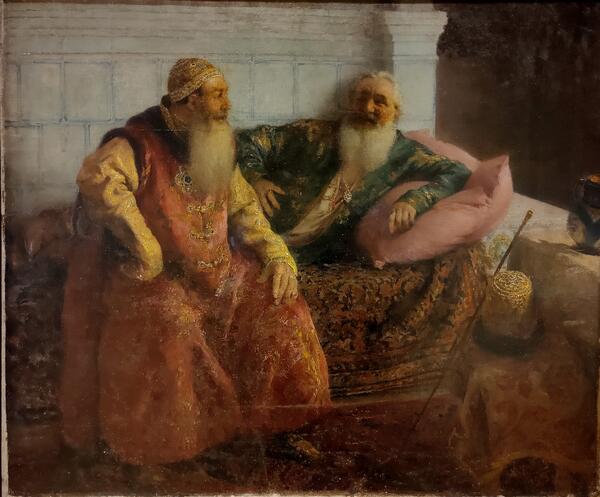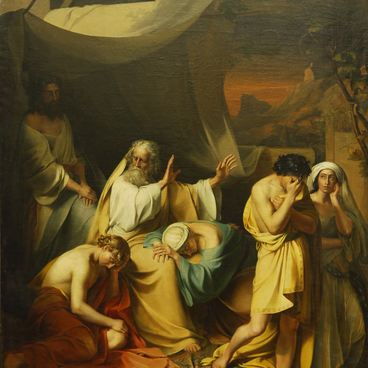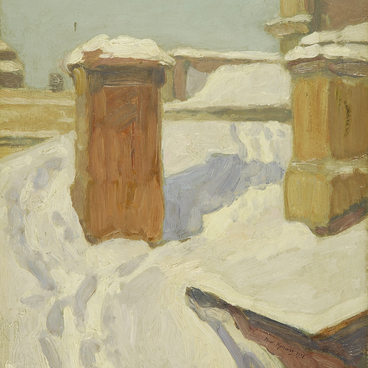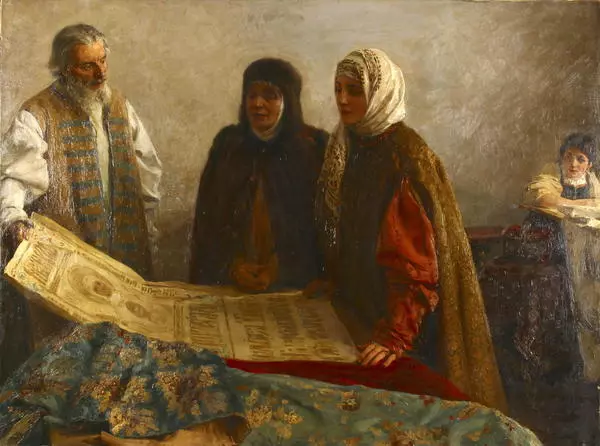Klavdiy Lebedev created the painting ‘Two old men, ” in 1913. He portrayed events from the life of the Russian nobility in the 17th century. Two adult men are cheerfully conversating at a home setting. The landlord of the home is dressed in an undershirt and robe, leaning on a pillow, and laying on the bed. His guest is sitting down next to him in a kaftan with gold embroidery. With long grey beards, the two men speaking could mislead the viewer into thinking that the artist really portrayed very old men. But if you pay attention to the dark colored hair under the hat of the guest, it becomes obvious that the man has not yet reached old age. The truth is that the heroes live in a different historical era. Researchers believe that the artist named the painting, “two old men, ” because in the mid 17th century life expectancy in Russia did not go beyond the age of 30 — and the characters in the painting are about two times older than the life span at the time.
The fancy golden costumes and the opulent embroidery show the viewers that the artist is portraying an aspect of the life of the boyar class. Up until the 17th century the boyars still had considerable wealth. They still had political power and independence, but they had a weaker position in court.
Klavdiy Lebedev often created canvases on the topics of princes and boyars. He convincingly painted the human figures” bodies proportionately according to human anatomy and created volumes with the help of lighting and shadowing. Also, he consistently displayed minor details of historical costumes in his paintings. He was attracted to bright colors of old Russian life, colorful outfits and legendary characters from the distant past. His works were not only distinguished because of his high artistic ability, but also because of its historical accuracy. The artist really spent a tremendous amount of research before starting to work, and when facing difficult challenges he never hesitated to ask experts for help.
Klavdiy Lebedev left a plethora of paintings and watercolors on topics of Russian history between the 10th and 17th centuries. Also, he illustrated stories and collaborated with different magazines. In 1897 he earned the title of academician for painting, and nine years later the Academy of Arts honored him by making him an official member.
The fancy golden costumes and the opulent embroidery show the viewers that the artist is portraying an aspect of the life of the boyar class. Up until the 17th century the boyars still had considerable wealth. They still had political power and independence, but they had a weaker position in court.
Klavdiy Lebedev often created canvases on the topics of princes and boyars. He convincingly painted the human figures” bodies proportionately according to human anatomy and created volumes with the help of lighting and shadowing. Also, he consistently displayed minor details of historical costumes in his paintings. He was attracted to bright colors of old Russian life, colorful outfits and legendary characters from the distant past. His works were not only distinguished because of his high artistic ability, but also because of its historical accuracy. The artist really spent a tremendous amount of research before starting to work, and when facing difficult challenges he never hesitated to ask experts for help.
Klavdiy Lebedev left a plethora of paintings and watercolors on topics of Russian history between the 10th and 17th centuries. Also, he illustrated stories and collaborated with different magazines. In 1897 he earned the title of academician for painting, and nine years later the Academy of Arts honored him by making him an official member.
